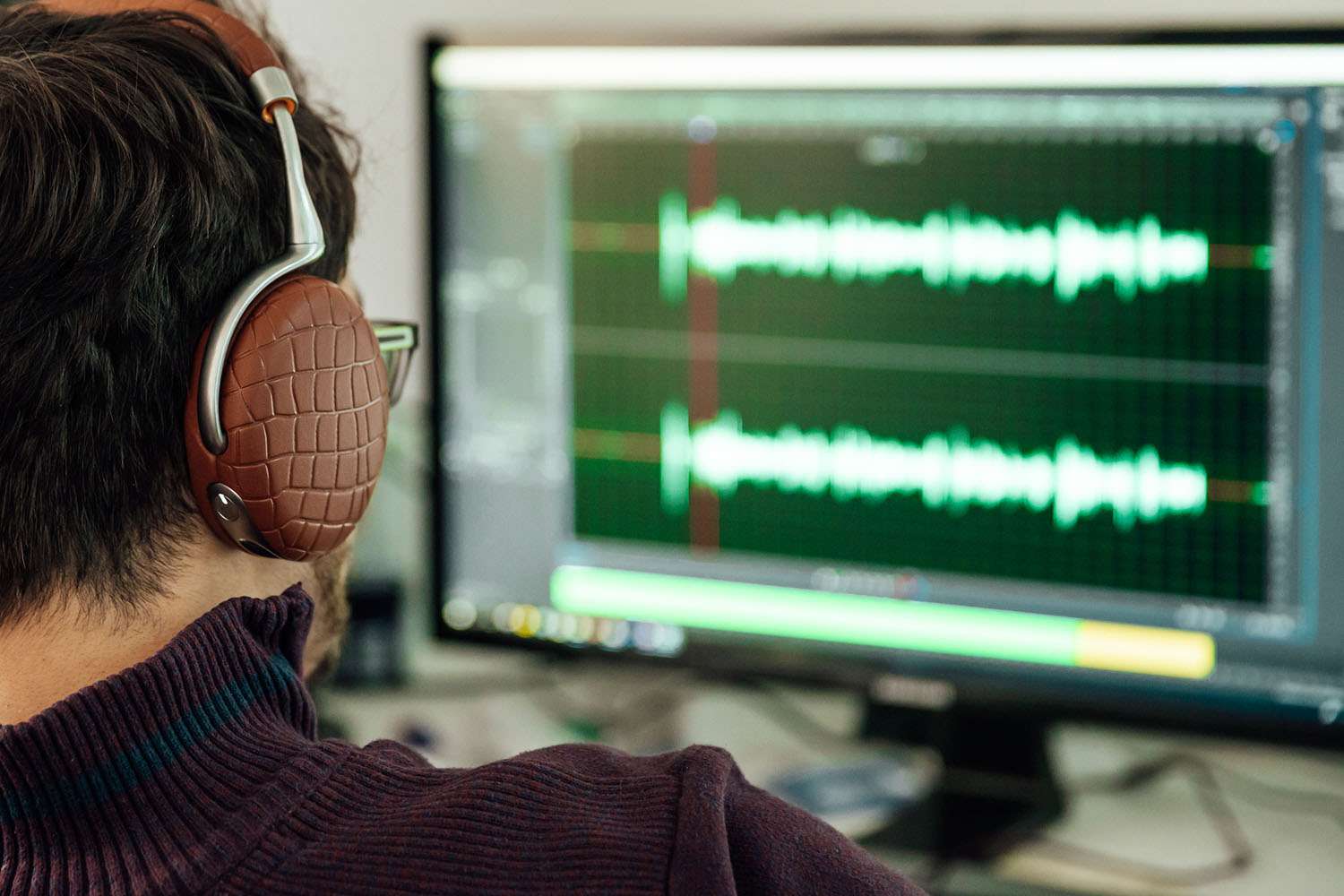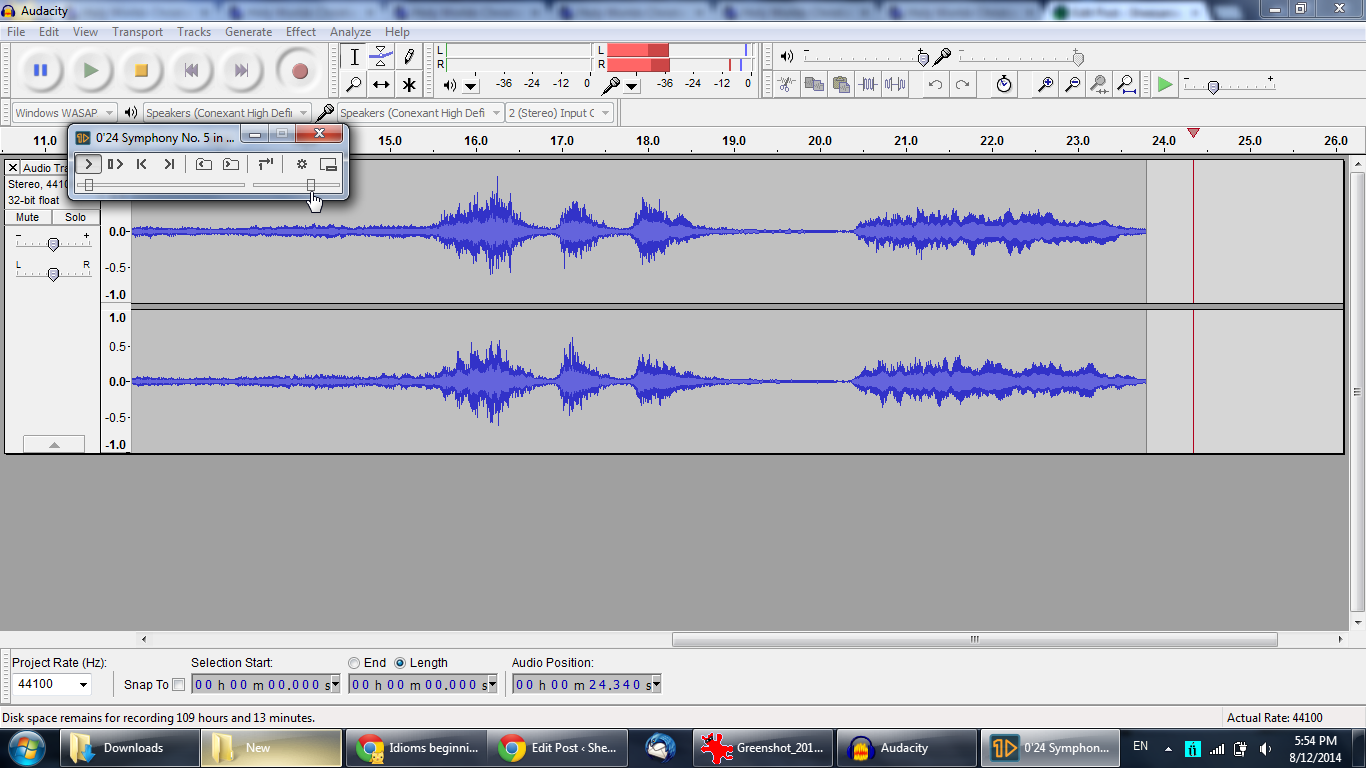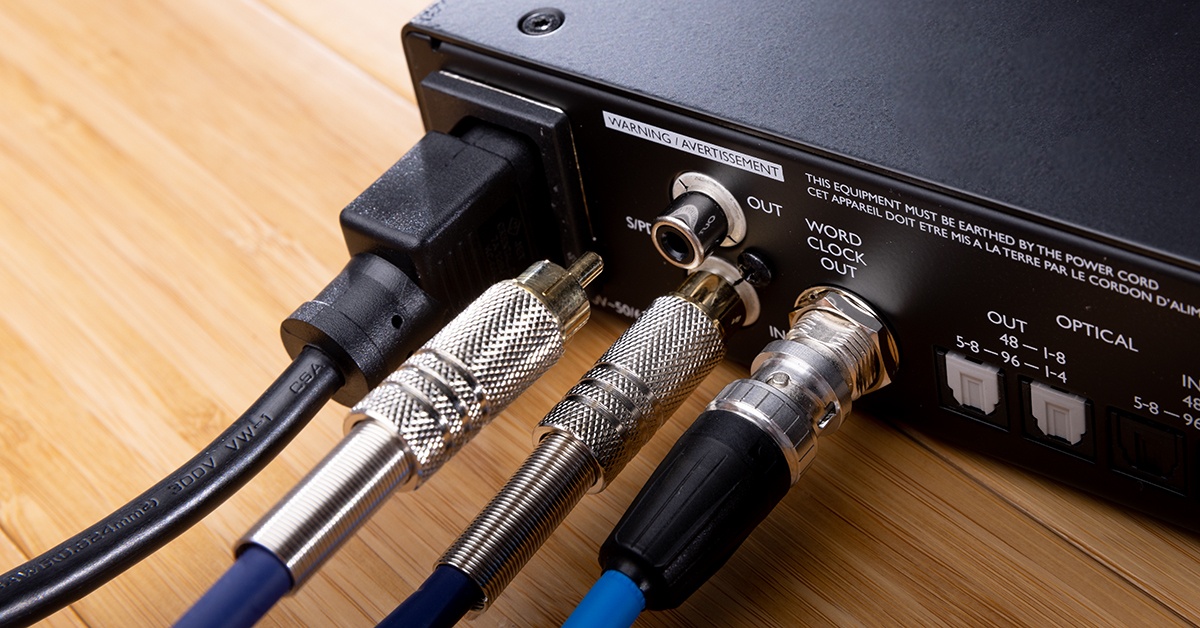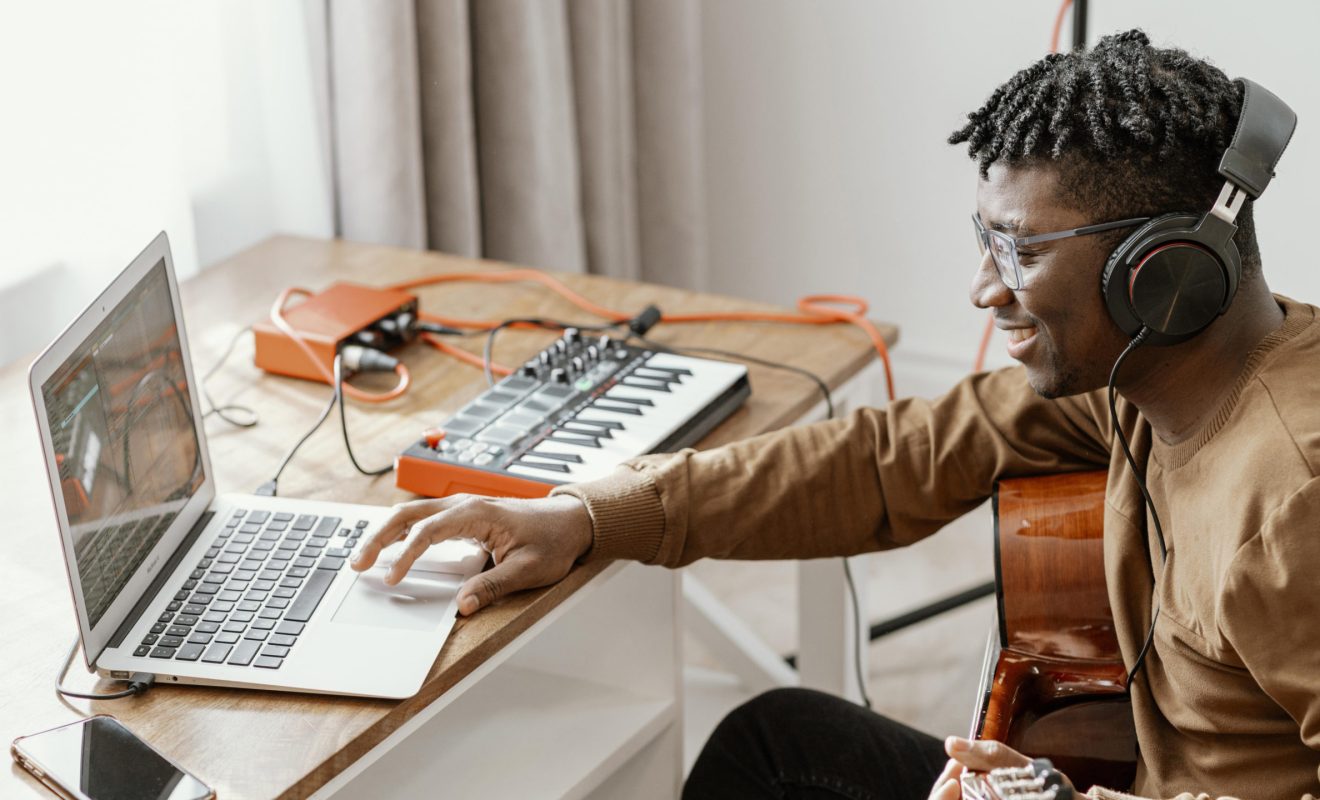Home>Production & Technology>Audio Cable>How To Lower Latency On Listening To Virtual Audio Cable


Audio Cable
How To Lower Latency On Listening To Virtual Audio Cable
Modified: February 19, 2024
Learn how to reduce latency while using Virtual Audio Cable with our simple guide. Improve your audio cable performance for a better listening experience.
(Many of the links in this article redirect to a specific reviewed product. Your purchase of these products through affiliate links helps to generate commission for AudioLover.com, at no extra cost. Learn more)
Table of Contents
Introduction
Welcome to the world of virtual audio cables! In this digital age, where audio plays a crucial role in our lives, it’s essential to have a seamless and high-quality audio experience. Whether you are a professional audio engineer, a gamer, or simply a music enthusiast, having a reliable audio setup is paramount.
One key element in achieving this is understanding and optimizing latency on your virtual audio cable. Latency refers to the delay between when a sound is generated and when it is heard, and it can greatly impact the overall audio experience.
In this article, we will explore the concept of virtual audio cables and delve into the intricacies of latency. We will also provide you with valuable tips and techniques on how to lower latency and improve the performance of your virtual audio cable setup.
So, whether you’re using virtual audio cables for live streaming, recording, or simply for listening to your favorite tunes, read on to discover how to enhance your audio experience and enjoy crisp, real-time sound.
What is Virtual Audio Cable?
Virtual Audio Cable, also known as VAC, is a software application that allows you to create virtual audio devices and connect them together for audio routing. It essentially acts as a virtual cable, transmitting audio streams between applications or devices within your computer, eliminating the need for physical cables.
With virtual audio cables, you can route audio from one application to another, record audio from multiple sources simultaneously, and even create custom audio effects chains. This versatility makes virtual audio cables a valuable tool for various audio-related tasks, such as live streaming, recording podcasts, producing music, or simply enhancing your audio playback experience.
Virtual audio cables come with a plethora of features and configuration options, allowing you to create complex audio setups tailored to your specific needs. You can adjust the sample rate, buffer size, and even configure real-time audio mixing and processing. The possibilities are virtually endless when it comes to customizing your audio routing.
One popular virtual audio cable software is VB-Audio Virtual Cable, which offers a simple yet powerful interface for creating and managing virtual audio devices. Other notable options include VoiceMeeter, Jack Audio Connection Kit (JACK), and Loopback (for macOS).
By utilizing virtual audio cables, you gain the flexibility to route audio between different applications and devices, creating seamless audio workflows and unleashing your creativity. However, it is crucial to optimize the latency on your virtual audio cable setup to ensure a smooth and real-time audio experience.
Understanding Latency
Latency, in the context of virtual audio cables, refers to the delay between the time an audio signal is generated and when it is played back. It is measured in milliseconds (ms) and can have a significant impact on the overall audio experience.
In audio applications, low latency is crucial to maintain real-time communication and synchronization between different elements of the audio signal chain. High latency can result in noticeable delays between, for example, pressing a key on a MIDI controller and hearing the corresponding sound, or experiencing a lag in audio when recording or streaming.
There are two main types of latency that you may encounter in your virtual audio cable setup:
1. Hardware Latency: This refers to the inherent delay introduced by the physical audio hardware, such as your sound card or audio interface. It is typically measured in small fractions of a millisecond (less than 10ms) and is usually minimal.
2. Software Latency: This is the delay caused by the processing and routing of audio within your computer’s software. It includes the time taken for the audio signal to travel through the virtual audio cable, any audio effects or processing applied, and the buffer settings of your audio devices. Software latency can vary significantly depending on the complexity of your audio setup and the settings you choose.
To achieve a smooth and real-time audio experience, it is essential to minimize both hardware and software latency. This ensures that audio signals are passed through the virtual audio cable and processed with minimal delay, resulting in a seamless and immersive audio playback or recording experience.
It’s important to note that achieving extremely low latency can be challenging, as it depends on various factors, including the capabilities of your audio hardware, the processing power of your computer, and the specific applications you are using. However, by understanding the factors that contribute to latency and implementing optimization techniques, you can significantly improve the performance of your virtual audio cable setup.
Factors Affecting Latency
There are several factors that can affect the latency of your virtual audio cable setup. Understanding these factors is essential for optimizing your audio system and achieving low-latency audio performance.
1. Buffer Size: The buffer size determines the amount of audio data that is processed and transferred between applications or devices in chunks, or “buffers.” A smaller buffer size reduces latency but requires more processing power, while a larger buffer size increases latency but puts less strain on your system. Finding the right balance is crucial for achieving optimal performance.
2. Sample Rate: The sample rate refers to the number of audio samples per second that are captured or played back by your audio devices. Higher sample rates generally result in lower latency, as there is less time between individual samples. However, using extremely high sample rates may put strain on your system, so it’s important to consider the capabilities of your hardware.
3. Processing Power: The processing power of your computer plays a significant role in determining the latency of your virtual audio cable setup. Audio effects, plugins, and software processing can introduce additional latency, especially if your CPU is under high load. Ensuring that your computer meets the recommended system requirements for your audio software is essential for optimal performance.
4. Audio Drivers: The quality and efficiency of your audio drivers can have a substantial impact on latency. Outdated or poorly optimized drivers can introduce unnecessary delays in audio processing. Keeping your audio drivers up to date and using ASIO (Audio Stream Input/Output) or other low-latency driver modes can help minimize latency.
5. System Resources and Background Processes: Running resource-intensive applications or background processes can consume CPU power and memory, resulting in increased latency. Closing unnecessary applications and processes while using your virtual audio cable setup can help maximize system resources and minimize latency.
By considering and optimizing these factors, you can significantly reduce latency and improve the overall performance and responsiveness of your virtual audio cable setup. In the next section, we will provide you with practical tips and techniques to help you lower latency and achieve optimal audio performance.
Tips to Lower Latency on Virtual Audio Cable
Lowering latency in your virtual audio cable setup is crucial for achieving real-time audio processing and a seamless audio experience. Here are some practical tips and techniques to help you minimize latency:
1. Update Audio Drivers: Ensure that you have the latest audio drivers installed for your sound card or audio interface. Outdated drivers can cause compatibility issues and increase latency. Visit the manufacturer’s website or use a driver update utility to keep your drivers up to date.
2. Adjust Buffer Size: Experiment with different buffer sizes in your virtual audio cable software. Decreasing the buffer size reduces latency but may increase the strain on your CPU. Find the smallest buffer size that does not cause audio dropouts or glitches to achieve optimal performance.
3. Close Unnecessary Programs: Close any unnecessary background applications and processes that may be using system resources. These can include web browsers, file-sharing programs, or resource-intensive applications. By freeing up system resources, you can reduce the processing load on your computer and minimize latency.
4. Disable Audio Enhancements: Disable any audio enhancements or effects applied by your operating system or sound card. These enhancements often introduce additional processing and can increase latency. Locate the audio settings in your OS or sound card control panel and disable any unnecessary effects.
5. Optimize System Settings: Adjust your computer’s power settings to prioritize performance over power saving. Set your power plan to “High Performance” to ensure that your CPU and other components are running at maximum capacity, reducing the chances of latency-causing slowdowns.
6. Use Dedicated Audio Hardware: Consider using dedicated audio hardware, such as an external audio interface, for better performance and lower latency. These devices are designed specifically for audio processing and often have optimized drivers and lower latency capabilities compared to built-in sound cards.
7. Monitor CPU Usage: Monitor the CPU usage in your task manager or performance monitoring software while using your virtual audio cable setup. If you notice high CPU usage, identify the processes or applications causing the load and close them or allocate more resources to your audio software.
By implementing these tips, you can significantly reduce latency and achieve a more responsive and real-time audio experience in your virtual audio cable setup. Experiment with different settings and configurations to find the optimal balance for your specific requirements and hardware capabilities.
Update Audio Drivers
Keeping your audio drivers up to date is essential for optimal performance and minimizing latency in your virtual audio cable setup. Outdated or incompatible drivers can introduce unnecessary delays and compatibility issues, resulting in increased latency and compromised audio quality. Here are some key points to consider when updating your audio drivers:
1. Visit the Manufacturer’s Website: To ensure you have the latest audio drivers, visit the website of your sound card or audio interface manufacturer. Look for a “Support” or “Downloads” section where you can find the most recent drivers for your specific model.
2. Check for Driver Updates Regularly: Audio driver updates may be released periodically to address bugs, introduce new features, or improve performance. It’s a good practice to check for updates regularly and install them as they become available.
3. Use Driver Update Utilities: If manually searching for and downloading drivers seems daunting, you can use driver update utilities such as Driver Booster, Driver Easy, or Snappy Driver Installer. These tools can scan your system, identify outdated drivers, and automatically download and install the latest versions for you.
4. Consider ASIO or Low-Latency Driver Modes: Many audio interfaces and virtual audio cable software support ASIO (Audio Stream Input/Output) or other low-latency driver modes. These drivers are specifically designed to reduce latency by bypassing unnecessary audio processing and providing direct access to your audio hardware.
5. Uninstall Old Drivers: Before installing new audio drivers, it’s recommended to uninstall any old or previous versions of the drivers. This helps prevent conflicts and ensures a clean installation of the updated drivers.
6. Restart Your Computer: After installing new audio drivers, it’s a good practice to restart your computer. This allows the system to apply the changes and ensures the new drivers are fully integrated into your setup.
7. Test and Monitor Latency: After updating your audio drivers, it’s essential to test and monitor the latency of your virtual audio cable setup. Use diagnostic tools or the latency settings in your audio software to identify if the driver updates have resulted in lower latency and improved performance.
By keeping your audio drivers up to date, you can ensure compatibility, stability, and optimized performance in your virtual audio cable setup. Regularly checking for updates and following the manufacturer’s guidelines will help you get the most out of your audio hardware and minimize latency for a seamless audio experience.
Adjust Buffer Size
Adjusting the buffer size is a crucial step in optimizing the latency of your virtual audio cable setup. The buffer size determines the amount of audio data that is processed and transferred in chunks, or “buffers,” between applications or devices. Finding the right buffer size is essential for balancing latency and system performance. Here’s how you can adjust the buffer size:
1. Understanding Buffer Size: The buffer size is measured in samples and is directly related to the latency of your audio system. A smaller buffer size reduces the latency but requires more processing power. Conversely, a larger buffer size increases the latency but puts less strain on your system.
2. Accessing Buffer Settings: The buffer settings can usually be accessed within your virtual audio cable software or audio interface control panel. Look for options like “Buffer Size,” “Latency,” or “Sample Buffer” to adjust the buffer size.
3. Reducing Buffer Size: Start by reducing the buffer size to the lowest value available in your software or control panel. This minimizes the latency but may increase the strain on your CPU. Test your audio setup to ensure that it can handle the smaller buffer size without any audio dropouts or glitches.
4. Monitoring System Performance: Keep an eye on your system’s performance while adjusting the buffer size. Monitor the CPU usage and make sure it doesn’t spike to uncomfortably high levels. If your system struggles with the smaller buffer size, gradually increase it until you find a balance between latency and performance.
5. Considerations for Recording and Playback: It’s important to note that the optimal buffer size may vary depending on whether you are recording or just listening to audio playback. When recording, it’s generally recommended to use a larger buffer size to ensure smooth real-time audio capture. For playback-only scenarios, you can use a smaller buffer size to minimize latency.
6. Latency vs. Performance: Adjusting the buffer size is all about finding the right balance between latency and performance. If you require extremely low latency for real-time interactions, you may need to allocate more processing power and prioritize performance. However, if you prioritize system stability and have more processing-intensive tasks, a slightly higher buffer size may be more suitable.
Experimenting with different buffer sizes and closely monitoring system performance is the key to finding the optimal balance for your virtual audio cable setup. Each setup and use case is unique, so take the time to adjust and test until you achieve the desired results with minimized latency and optimal audio performance for your needs.
Close Unnecessary Programs
When it comes to minimizing latency in your virtual audio cable setup, closing unnecessary programs and processes is a simple yet effective technique. By doing so, you can free up system resources and ensure that your computer’s processing power is dedicated to audio tasks. Here’s how you can close unnecessary programs to optimize your audio performance:
1. Identify Resource-Intensive Programs: Start by identifying any resource-intensive programs that are running in the background. These can include web browsers with multiple tabs, file-sharing applications, video editing software, or other CPU and memory-intensive applications.
2. Task Manager: Open the Task Manager on your computer (Ctrl+Shift+Esc on Windows or Cmd+Space and search for “Activity Monitor” on macOS) to view a list of all processes and applications currently running.
3. Terminate Programs: In the Task Manager, review the list of processes and programs and identify any that you don’t need while using your virtual audio cable setup. Right-click on the program and select “End Task” (Windows) or “Quit” (macOS) to close it.
4. Disable Startup Programs: Some programs automatically start when you turn on your computer, consuming valuable resources. Open the task manager or use the system settings to disable any unnecessary programs from launching at startup.
5. Browser Tabs and Extensions: If you often have multiple tabs open or use browser extensions while using your virtual audio cable setup, consider closing unnecessary tabs and disabling extensions that are not essential for your audio tasks.
6. Audio and Video Streaming Services: Streaming services like Spotify, Netflix, or YouTube can consume significant resources. Close or pause any audio or video streaming services that are running in the background to avoid unnecessary strain on your system.
7. Avoid System Optimization Tools: While system optimization tools claim to improve performance, they can often interfere with other applications and cause conflicts, resulting in increased latency. It’s recommended to avoid using these tools while working with your virtual audio cable setup.
By closing unnecessary programs and processes, you can optimize system resources and ensure that your computer’s processing power is focused on handling audio tasks with minimal latency. Keep in mind that it’s always good practice to save any important work before closing programs and to re-enable them once you’re done with your audio tasks.
Disable Audio Enhancements
Disabling audio enhancements is an effective strategy for reducing latency and fine-tuning the performance of your virtual audio cable setup. Audio enhancements, such as virtual surround sound, equalizers, or audio effects, can introduce additional processing, causing latency and potentially degrading the audio quality. Here’s how you can disable audio enhancements to optimize your audio performance:
1. Windows Audio Enhancements: If you are using a Windows operating system, you can access audio enhancements settings through the Sound control panel. Right-click on the speaker icon in the system tray, select “Sounds,” and go to the “Playback” tab. Right-click on your audio device and choose “Properties.” In the Enhancements tab, uncheck any audio enhancements that are enabled.
2. Third-Party Audio Software: If you have installed third-party audio software, such as sound card control panels or equalizer applications, check their settings for any audio enhancements. Disable any features that are not essential for your audio tasks or that may be causing latency.
3. Disable Spatial Sound: Spatial sound technologies, such as Windows Sonic or Dolby Atmos for headphones, can introduce additional processing and potentially increase latency. If you are not using spatial sound or if it is not necessary for your audio setup, disable it in the sound settings of your operating system.
4. Bypass Equalizers or Audio Effects: If you have enabled equalizers or audio effects within your media player or audio application, consider disabling them. While they can enhance your audio experience, they often require additional processing and may contribute to latency.
5. Reduce Audio Processing: Some sound cards or audio interfaces come with their own control panels or software that offer various audio processing features. If you are experiencing latency or performance issues, such as delayed audio playback or recording, disable or reduce the amount of audio processing performed by the hardware.
6. Restart Applications: After disabling audio enhancements, restart any applications or media players that you are using for your audio tasks. This ensures that the changes take effect and allows for a clean audio playback or recording experience.
By disabling unnecessary audio enhancements, you can streamline your virtual audio cable setup and reduce latency. Keep in mind that disabling enhancements might result in a more transparent audio experience, as the audio signal is less modified. Experiment with different settings and configurations to achieve the optimal balance between audio quality and latency for your specific needs.
Optimize System Settings
Optimizing your system settings is crucial for achieving low latency and optimal performance in your virtual audio cable setup. By fine-tuning various settings on your computer, you can ensure that resources are allocated efficiently and that your system is ready to handle the demands of audio processing. Here are some key steps to optimizing your system settings:
1. Power Plan: Make sure your computer is set to a high-performance power plan. On Windows, navigate to the Power Options in the Control Panel or Settings and select the “High Performance” plan. This ensures that your CPU and other components are running at their maximum capacity, reducing the chances of latency-causing slowdowns.
2. Disable Background Applications: Close any unnecessary applications and background processes that may consume system resources. Look for applications that may run in the background, such as cloud syncing services, antivirus scans, or system maintenance utilities. Disabling or closing these applications frees up resources for audio processing.
3. Adjust Visual Effects: Reduce or disable unnecessary visual effects on your operating system. On Windows, go to the Performance Options in the Control Panel or Settings, and choose the “Adjust for best performance” option or manually disable specific visual effects. This reduces the strain on your GPU, freeing up resources for audio tasks.
4. Close Unnecessary Network Connections: Disconnect from networks or disable network adapters that are not needed for your audio tasks. This helps reduce network-related activity, such as syncing or downloading updates, which can compete for bandwidth and system resources.
5. Update Operating System: Keep your operating system updated with the latest patches and fixes. Updates often include performance improvements, bug fixes, and enhancements that can contribute to a more stable and efficient system for audio processing.
6. Disable or Adjust Security Software: Antivirus and security software can sometimes interfere with the performance of audio applications. Consider adjusting the settings or temporary disabling the software while working with your virtual audio cable setup. Be cautious and ensure that you have appropriate security measures in place.
7. Perform Regular Maintenance: Regularly clean up your computer by removing unnecessary files, running disk cleanup tools, and defragmenting your hard drive. This can help improve overall system performance and ensure that your audio applications run smoothly.
By optimizing your system settings, you can create an environment that is conducive to low-latency audio processing. These adjustments help ensure that your CPU, memory, and other resources are dedicated to audio tasks, resulting in a smoother and more responsive virtual audio cable experience.
Conclusion
In conclusion, achieving low latency on your virtual audio cable setup is crucial for ensuring a seamless and real-time audio experience. By understanding the concept of latency and implementing optimization techniques, you can improve the performance of your audio system and enjoy crisp, instantaneous sound.
We explored the world of virtual audio cables, understanding their purpose and versatility in routing audio between applications and devices. Virtual audio cables provide a flexible solution for various audio-related tasks, such as live streaming, recording, and music production.
Latency, the delay between audio generation and playback, was discussed in detail. We learned about the factors that affect latency, including buffer sizes, sample rates, processing power, audio drivers, and system resources. These factors play a significant role in determining the responsiveness of your virtual audio cable setup.
To lower latency, we provided several practical tips and techniques. Updating audio drivers ensures compatibility and improved performance. Adjusting buffer sizes helps find the optimal balance between latency and system resources. Closing unnecessary programs and disabling audio enhancements free up valuable resources for audio tasks. Lastly, optimizing system settings, such as adjusting power plans and visual effects, can significantly improve audio performance.
Incorporating these strategies and finding the right balance for your specific setup will result in minimized latency and enhanced audio quality. Experimentation and monitoring system performance are key to achieving the best results.
So, whether you’re a professional audio engineer, a gamer, or a music enthusiast, implementing these techniques will help you create a smooth and immersive audio experience with your virtual audio cable setup. Dive in, optimize your audio system, and enjoy the real-time sound you desire!











